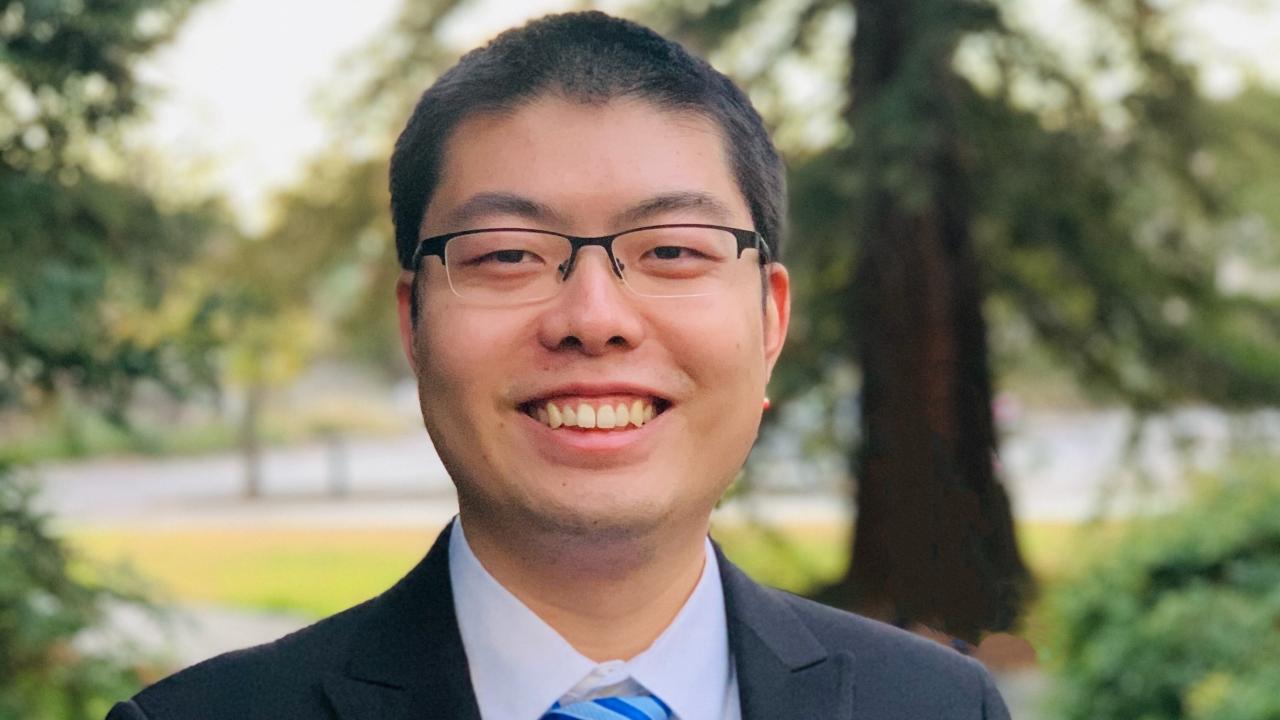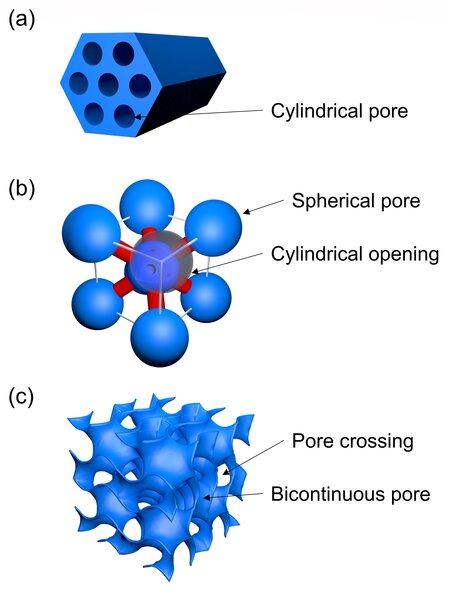
Student Spotlight: Yiqing Xia
Materials science and engineering (MSE) Ph.D. student Yiqing Xia has been chosen as a presenter for the 2021 North American Materials Colloquium Series, a competitive virtual materials science seminar series involving over 35 MSE programs from around the country. He will present his recent research on the thermodynamic and kinetic behavior of nano-confined liquids on April 8-9, representing UC Davis, the MSE department and his research on confined liquids and glassy materials.
The project is part of a U.S. Department of Energy Energy Frontier Research Center (EFRC) called Multi-Scale Fluid-Solid Interaction in Architected and Natural Materials, or MUSE. Xia’s research, done in coordination with his advisor, professor Sabyasachi Sen, and distinguished professor Subhash Risbud, looks at the dynamics and phase transitions of liquids confined in nanometer-sized pores in solid materials.
Pore Size and Thermodynamic Transitions

In the talk, Xia will present his recent work on liquids that are confined in mesoporous silica, a type of nanoporous material with small cylindrical holes that can look like a tiny honeycomb. When confined in these tiny pores, liquids have a lower melting temperature, a unique phenomenon known as melting temperature depression behavior. As the pore size decreases, so does the melting temperature.
Using ²H wide-line nuclear magnetic spectroscopy, Xia found that at low temperatures, both solid-like and liquid-like water molecules can exist in the same pore at the same time, something that’s impossible in bulk liquids. To explain the phenomenon, his team proposed a layer-by-layer freezing model.
“If freezing starts from the wall [of the pore], then the layer bounded to the nanopore is the first one that solidifies. It then solidifies layer by layer until the center of the pore becomes ice,” he explained.
He also looked at what happens when there are interconnected pores of different sizes that the liquid can freely flow between, finding that water has two different melting temperatures, corresponding to the size of each pore.
“It was a surprise to see that the dynamic properties and structural characteristics of confined water can be preserved even when these pores are connected and even over distances as small as a few angstroms,” he explained.
Xia also looked at kinetic transition of the glass-forming liquid O-terphenyl under the same conditions. He found that like melting temperature, the glass transition temperature decreases along with pore size and that different glass transition temperatures can exist if the sample is confined in these interconnected pores.
The project has applications in geochemistry, nanofluidics and biology, but to Xia, the most exciting part is the fundamental research. Learning how liquids behave in nano-confinement is the first step toward learning how to control them for these different applications, and toward designing nanoporous materials to facilitate these properties.
A Glass Transition
Though he will be presenting his work on nano-confined liquids, Xia’s main interest is glass science. He is working on his dissertation research on the fragility behavior of glass-forming liquids, specifically the structural connectivity and fragility of binary phosphate liquids and chalcogenide glass-forming liquids.
“The fragility describes the viscosity change at the glass-transition temperature, so if the viscosity changes a lot, then the fragility is higher,” he explained.
Using rheological measurements and NMR spectroscopy, he plans to investigate the fragility behavior and structure of these glass systems to establish a connection between structural connectivity and fragility. Understanding this relationship is key to eventually being able to predict glass properties, which will help researchers make more glasses useful for technological applications.
Xia was inspired to go to graduate school by his undergraduate research experience at Shanghai Jiao Tong University. He came to UC Davis in 2016 and joined Sen’s research group after talking with him about glass science. Though he didn’t have a background in the field, Xia found it really interesting and felt confident pursuing it thanks to Sen’s encouragement. After he completes his Ph.D., he plans to look for an industry job where he can leverage his knowledge in glass science for good.
“Professor Sen told me that most new graduate students don’t have backgrounds in glass science, but that doesn’t matter and it doesn’t mean that they can’t do good research,” he said. “That inspired me to get started and learn more.”
